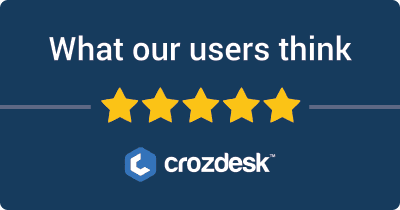
Top Shopify Alternatives & Competitors based on 533 Reviews
Reviews collected from
trustpilot.com
reviews.io
sitejabber.com
trustradius.com
gartner.com
capterra.com
softwareadvice.com
productreview.com.au
facebook.com
.
| Brand | Pricing |
|---|---|
|
★ ☆ ☆ ☆ ☆ 1.1 |
Shopify offers a 14-day free trial, followed by three main pricing tiers: Basic ($39/month), Shopify ($105/month), and Advanced Shopify ($399/month). Each plan includes different features such as reports, advanced analytics, and shipping discounts. |
|
★ ★ ★ ★ ☆ 3.6 |
BigCommerce provides a 15-day free trial with four pricing plans: Standard ($39/month), Plus ($105/month), Pro ($399/month), and an Enterprise option with custom pricing. Each tier offers a variety of features including online sales channels and advanced SEO tools. |
|
★ ★ ★ ★ ★ 4.8 |
ClickFunnels has a 14-day free trial and offers two main pricing plans: Basic ($149/month) and Platinum ($297/month). Each plan includes features like funnels, pages, and email marketing capabilities. |
|
★ ★ ★ ☆ ☆ 2.7 |
Squarespace offers four pricing plans: Personal ($19/month), Business ($33/month), Basic Commerce ($36/month), and Advanced Commerce ($65/month). Features include website templates, eCommerce capabilities, and marketing tools, with commerce-focused plans providing additional features. |
|
★ ★ ★ ☆ ☆ 2.6 |
Webflow provides various pricing options: Basic ($18/month), CMS ($29/month), Business ($49/month), and Enterprise (custom pricing). Each plan has a focus on different use cases, from simple portfolio sites to complex eCommerce storefronts, with various levels of hosting and CMS functionality. |
|
★ ☆ ☆ ☆ ☆ 1 |
Weebly offers a free plan with limited features, and paid plans include Personal ($6/month), Professional ($12/month), and Performance ($26/month). The higher tiers provide advanced features like password protection, HD video, and eCommerce capabilities. |
|
★ ★ ★ ☆ ☆ 2.8 |
Wix has a free plan alongside premium plans that range from Combo ($16/month) to VIP ($45/month). Each plan includes various features such as connected domains, storage, and eCommerce functionality. |
|
★ ★ ☆ ☆ ☆ 1.9 |
WooCommerce is free as a plugin for WordPress; however, costs arise from web hosting, themes, and extensions. Users can customize their hosting and payment solutions, allowing for scalable pricing based on the store’s needs. |
|
★ ★ ★ ☆ ☆ 2.8 |
WordPress.org is a free, open-source software. However, users will incur costs for hosting, domain registration, themes, and plugins, which can vary widely based on user choices and needs. |
Compare your brand to your competitors
Why should you be looking for a Shopify alternative?
Users often seek alternatives to Shopify due to specific feature needs, ease of use, budget constraints, and varying support options. Factors such as transaction fees, scalability, design flexibility, and overall customization play crucial roles in their decision-making. Top alternatives include BigCommerce for robust e-commerce tools, ClickFunnels for sales funnels, Squarespace for stunning design capabilities, Webflow for intricate design control, Weebly for user-friendliness, Wix for customization, Woocommerce for WordPress integration, and WordPress for extensive content management. This guide will analyze these options based on features, pricing, and target users.
Quick Overview of Top Shopify Competitors
-
BigCommerce – Best Shopify Alternative for Large Businesses
Known for its scalability, BigCommerce is ideal for larger enterprises that require advanced features without transaction fees. It offers built-in analytics, multi-channel selling, and extensive integration options. -
ClickFunnels – Top Shopify Competitor for Sales Funnels
ClickFunnels specializes in creating high-conversion sales funnels, making it ideal for marketers. It provides a drag-and-drop builder, A/B testing, and integrations with various marketing tools to maximize sales. -
Squarespace – Best Shopify Alternative for Design Flexibility
Squarespace is renowned for its stunning design templates and user-friendly interface. It offers features such as SEO tools and blogging capabilities, appealing to creative businesses looking for elegant websites. -
Webflow – Most Customizable Shopify Alternative
Webflow combines design flexibility with CMS capabilities, making it suitable for professional designers. It allows for custom coding and responsive designs, catering to those needing complete creative control. -
Weebly – Cheapest Shopify Competitor for Small Stores
Weebly is cost-effective and user-friendly, making it an excellent choice for small businesses and entrepreneurs. It features drag-and-drop functionality, basic eCommerce options, and built-in SEO tools. -
Wix – Easiest Shopify Alternative for Beginners
Wix is extremely beginner-friendly, featuring a simple drag-and-drop builder with a wealth of customizable templates. It offers a range of eCommerce functionalities and marketing tools, perfect for small businesses. -
WooCommerce – Best Shopify Competitor for WordPress Users
WooCommerce transforms WordPress sites into fully functional online stores. It’s highly customizable and ideal for those who are already familiar with the WordPress ecosystem, allowing for extensive plugin integrations. -
WordPress – Most Versatile Shopify Alternative for Content-Driven Stores
WordPress is a powerful content management system that can be adapted for eCommerce through plugins like WooCommerce. It offers unparalleled flexibility and SEO capabilities, suitable for businesses that prioritize content.
Shopify Alternatives: Feature by Feature Comparison
| Feature | BigCommerce | ClickFunnels | Squarespace | Webflow | Weebly | Wix | WooCommerce | WordPress | Shopify |
|---|---|---|---|---|---|---|---|---|---|
| E-commerce Capabilities | Comprehensive built-in features | Focus on sales funnels | Basic e-commerce features but strong design | Design flexibility with commerce integration | Simple e-commerce solutions | Easy setup for e-commerce | Full control over e-commerce capabilities | E-commerce through plugins (like WooCommerce) | Premier e-commerce solution |
| Scalability | Excellent for large catalogs and high volume | Mostly geared towards small/medium businesses | Suitable for small to medium businesses | Great for growing businesses | Best for small businesses | Good for small to medium businesses | Highly scalable with WordPress architecture | Highly scalable but can be resource-intensive | Excellent scalability |
| Customization | High degree of customization | Limited to funnel customization | Strong design templates but limited code access | Complete design flexibility through CSS | Basic customization options | Many templates with customization | Highly customizable through coding | Almost unlimited customization possibilities | Good customization but limited compared to open-source systems |
| Ease of Use | User-friendly with a learning curve | Very user-friendly for funnel creation | Intuitive drag-and-drop interface | Learning curve due to vast capabilities | Easy to set up and use | User-friendly with drag-and-drop features | Moderate learning curve | User-friendly but complex for advanced features | Highly user-friendly but can get complex |
| Cost | Competitive pricing for extensive features | Subscription model for funnel access | Monthly subscription based on features | Higher cost for advanced features | Affordable tiered pricing | Competitive pricing with free option | Free (self-hosted) or paid plans | Free (self-hosted) or premium plans | Monthly fees vary based on plan |
| SEO Features | Strong SEO capabilities | Basic SEO functionalities | Good SEO features built-in | Advanced SEO settings available | Basic SEO features | Strong SEO options available | Excellent SEO configuration through plugins | Great SEO capabilities | Strong SEO features |
| Payment Gateways | Support for multiple gateways | Integrated payment system | Limited payment options | Supports various gateways | Standard payment processing options | Wide range of payment gateways | Supports numerous payment gateways | Extensive payment options through plugins | Wide range of payment gateways |
| Support Options | 24/7 support with extensive resources | Limited but focused funnel support | 24/7 service but with fewer resources | Limited but responsive support | Standard customer support options | 24/7 support with various resources | Community forums plus various levels of support | Large community with extensive resources | 24/7 support available |
| Mobile Responsiveness | Fully responsive designs | Mobile-optimized funnels | Fully responsive templates | Fully responsive designs | Mobile-responsive templates | Fully responsive designs | Responsive with customizable themes | Fully responsive with adaptable themes | Fully responsive designs |
| Unique Aspects | Advanced reporting and analytics | Proven sales funnel templates | Integrated marketing tools | Visual design capabilities with CMS integration | Focus on ease of use for basic websites | Highly customizable templates and apps | Extensive e-commerce plugins library | Massive community and plugin ecosystem | Focus on e-commerce optimization |
Unique or Superior Aspects Highlighted:
- BigCommerce: Advanced reporting features and scalability make it ideal for larger brands.
- ClickFunnels: Specialized in building effective sales funnels, catering to marketers primarily.
- Squarespace: Offers beautiful design templates that stand out for creatives and small businesses.
- Webflow: Provides unmatched design capabilities, allowing detailed customization and interaction design.
- Weebly: User-friendly for beginners; excellent for creating quick, simple websites without complexity.
- Wix: Provides a vast array of templates and customization options, appealing to small businesses and creatives.
- WooCommerce: Highly customizable and extensive plugin options for users needing full control.
- WordPress: Unmatched flexibility and a vast community providing endless resources and plugins for any need.
This table outlines how these platforms stack up against Shopify, pinpointing unique advantages and potential fit for varied business needs.
Compare your brand to your competitors
Integration Capabilities for each Shopify competitor
| Alternative | Supported Integrations | Compatibility Notes |
|---|---|---|
| Shopify | Payment gateways, Shipping & fulfillment, Marketing, Social media, Accounting, Customer service, Inventory management | Extensive app ecosystem with over 4,000 apps; well-suited for eCommerce. |
| BigCommerce | Payment gateways, Shipping services, Accounting, Inventory management, Customer relationship management (CRM) | Supports a robust set of eCommerce integrations; strong for B2B sales. |
| ClickFunnels | Email marketing, Payment gateways, Webinar platforms, CRM | Focused on sales funnels; integrates well with marketing tools like MailChimp and Actionetics. |
| Squarespace | Payment processors, Social media, Email marketing, Shipping | Limited integrations compared to others; emphasizes built-in features. |
| Webflow | CMS, Payment gateways, Email marketing, Analytics | Strong for design-forward websites; less extensive app ecosystem but integrates with Zapier for advanced workflow. |
| Weebly | Payment processors, Email marketing, Shipping | Limited selection of third-party integrations; more focused on small businesses. |
| Wix | Payment processors, Email marketing, Social media, Booking systems | Offers a diverse range of integrations; website-focused rather than eCommerce. |
| WooCommerce | Payment gateways, Shipping methods, Marketing tools, Accounting | Highly customizable; a vast number of plugins available through WordPress. |
| WordPress | eCommerce, SEO, Social media, Email marketing, Security | Extensive plugin ecosystem; highly flexible with compatibility with numerous tools. |
This table compares major third-party integrations of various popular platforms against Shopify, highlighting their unique capabilities and compatibility considerations.
Pros and Cons of each Shopify Alternative
Here’s a comparative table outlining the primary pros and cons of various e-commerce platforms relative to Shopify:
| Alternative | Pros | Cons |
|---|---|---|
| BigCommerce | – No transaction fees, even on lower plans. | – User interface can be less intuitive than Shopify. |
| – Advanced SEO features and native payment gateways. | – Requires more technical knowledge for customizations. | |
| – Suitable for larger catalogs and high-volume sales. | – Limited theme selection compared to Shopify. | |
| – Powerful built-in analytics and reporting tools. | ||
| ClickFunnels | – Focused on sales funnels and conversion optimization. | – Primarily designed for sales funnels, not for complete e-commerce solutions. |
| – Built-in A/B testing, email marketing, and membership site options. | – Monthly cost can be high for small businesses. | |
| – Easy integration with various payment gateways and other tools. | – Less flexibility for product catalog management compared to Shopify. | |
| Squarespace | – Visually appealing templates and strong design options. | – Less flexibility in e-commerce features compared to Shopify. |
| – User-friendly interface with no coding required. | – Limited payment gateway options. | |
| – Built-in blogging features for content marketing. | – Higher transaction fees on lower plans. | |
| Webflow | – Highly customizable design with a focus on high-quality visuals. | – Requires some knowledge of web design and development skills. |
| – No CMS limitations for content-heavy sites. | – E-commerce features are not as developed as Shopify’s. | |
| – Flexibility in design and layout without templates. | – Learning curve can be steep for beginners. | |
| Weebly | – Easy to use with drag-and-drop interface, ideal for small businesses | – Fewer built-in e-commerce features compared to Shopify. |
| – Low-cost plans for beginners. | – Limited scalability as the business grows. | |
| – Integrated marketing features like SEO and analytics. | – Design options are not as flexible. | |
| Wix | – Intuitive drag-and-drop editor for easy website creation. | – Less robust e-commerce capabilities for larger businesses compared to Shopify. |
| – Broad selection of templates and design flexibility. | – Performance issues can arise with more complex sites. | |
| – Free plan available, great for initial testing. | – Limited payment gateways and transaction fees on lower-tier plans. | |
| WooCommerce | – Fully customizable and open-source platform; great for developers. | – Requires more hands-on management and technical knowledge. |
| – No limits on products, great for scaling. | – Performance can be affected by hosting and optimization efforts. | |
| – Extensive plugins and extensions available for additional features. | – Initial setup can be time-consuming. | |
| WordPress | – Flexible content management and full control over site design and functionality. | – Requires hosting and security management. |
| – Large community with extensive support and resources. | – Security risks if not maintained properly. | |
| – Wide range of themes and plugins to enhance functionality. | – E-commerce capabilities depend on proper configuration compared to Shopify. |
This table presents a succinct comparison that highlights the main advantages and disadvantages of each alternative to Shopify based on typical use cases, making it easier to evaluate business needs.
Shopify vs Competitors: Traffic & Marketing Comparison
Traffic Comparison:
Shopify attracts the highest organic traffic, peaking at over 136 million visits in December 2023. In comparison, BigCommerce’s traffic is significantly lower, hitting a peak of approximately 15.6 million visits in December 2023. Other brands like Weebly and Wix also show substantial traffic, with Weebly reaching around 52 million in December 2023. Conversely, ClickFunnels and Woocommerce rank lower, showcasing minimal visits below 1 million, indicating a clear disparity in brand visibility and user engagement across these platforms.
Top Performing Keywords:
Shopify dominates with keywords like "shopify app" and "shopify store" ranking first, illustrating a strong focus on brand-specific terms. BigCommerce excels in broader e-commerce-related keywords, ranking well for "ecommerce software" and "best ecommerce platform." ClickFunnels thrives on marketing-centric keywords, while Squarespace focuses on website creation terms. Notably, Webflow and Weebly utilize similar keywords in design and website-building. This diversification indicates differing strategies, with Shopify’s brand-centric approach standing out prominently.
Conclusions on Visibility and Reach:
Shopify leads in online visibility due to its robust organic traffic and strong ranking for branded keywords. BigCommerce and Squarespace also demonstrate solid visibility through targeted keywords in the e-commerce space. Chat funnels rank ClickFunnels uniquely in marketing, while Webflow and Weebly manage decent traffic figures through website-building keywords. Brands like Woocommerce and ClickFunnels lag in overall reach, indicating room for improvement in their SEO strategies and keyword optimization efforts.
Compare your brand to your competitors
Other “Shopify” Alternatives & Competitors that you can find for free
Here are five alternatives to Shopify, along with their key features, strengths, and value propositions:
-
Magento
- Key Features: Highly customizable, open-source platform, extensive range of plugins, advanced SEO capabilities, multi-store management, and support for various payment gateways.
- Strengths: Ideal for larger businesses with complex requirements; strong community support; robust scalability.
- Value Proposition: Tailored for enterprises seeking a highly customizable e-commerce solution with the capability to handle large inventories and high traffic.
-
Pawtree
- Key Features: Designed for direct sales and network marketing; robust tools for sales representatives; customizable e-commerce websites; and automated marketing features.
- Strengths: Strong focus on supporting direct sales organizations; user-friendly dashboard for tracking sales and commissions.
- Value Proposition: Perfect for businesses with a network marketing model, providing tools to empower representatives and grow their personal sales strategies.
-
ShopWired
- Key Features: User-friendly setup; integrated marketing tools; customizable themes; responsive customer support; and support for multiple payment methods.
- Strengths: Strong focus on the UK market, with several localized features; competitive pricing structure.
- Value Proposition: Affordable and straightforward e-commerce platform suited for small to medium-sized businesses looking to establish an online presence easily.
-
3dcart (now Shift4Shop)
- Key Features: Wide range of built-in features; free online store migration; unlimited products and bandwidth; and essential SEO tools.
- Strengths: Cost-effective solutions for start-ups and small businesses; no transaction fees; extensive customer support.
- Value Proposition: A comprehensive e-commerce platform that provides tools necessary for running a successful online store without hidden costs.
-
Volusion
- Key Features: Integrated payment processing; customizable store templates; inventory management; and built-in SEO tools.
- Strengths: Good for small to medium-sized businesses; easy-to-use interface and dashboard.
- Value Proposition: A straightforward e-commerce solution that simplifies selling online, enabling users to launch and manage stores with limited technical knowledge.
These alternatives serve varied business needs, from small startups to larger enterprises, providing various unique features, strengths, and propositions that cater to different e-commerce strategies.


